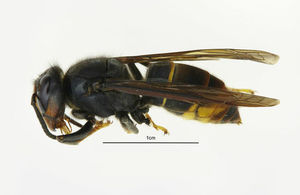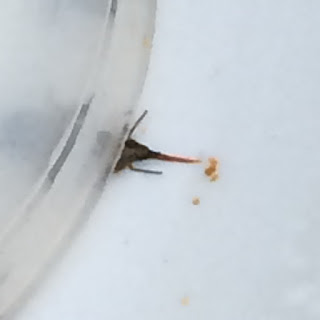- Check that both hives have enough honey stored for winter. Yes, they do - so I can stop feeding Caroline's bees now.
- Change the hive configuration. Normally, the super (the box with the honey frames, but no brood) goes above the queen excluder, which is above the brood box (where the queen lays all the eggs). In winter, I put the super underneath the brood box, and remove the queen excluder - allowing the queen, and the rest of the colony to roam freely. The idea behind this is that the bees will generally form the cluster at the bottom of the hive (in the super) and then work their way upwards - to the brood box - as winter progresses. This means they will be in the brood box when spring comes around, which keeps things nice and tidy for me. Actually, not all beekeepers do this, but it's how I was taught, and it's served me and the bees well so far.
There are a lot of bees in each hive at the moment, and there's a lot of honey on the frames - making the boxes pretty heavy. So, this was going to be a two person job. Luckily, my friend Fi was visiting this weekend and was on hand to help. Unluckily, she got stung (twice) while helping me move the boxes around. Well, that's bees for you... (Sorry, Fi!)
- Finally, sprinkle some icing sugar onto the brood frames. Here's Fi doing just that:

The reason for doing this is it gets on the bees, which then groom each other to remove the icing sugar. As they do so, they are more likely to find varroa mites, and remove them too. So it acts as a natural stimulant to the bees' normal grooming behaviour. I haven't used any chemical controls in either hive this year (though doing the comb change in Miriam's hive will have helped to lower the number of varroa in the hive). So hopefully this will help a bit in reducing the mite level - which is important, as I don't want the hives carrying too many mites over winter. Too many mites increases the risk that the colony won't survive, and I want to keep the risk down if I can.
Normally I will actually pull the frames out and sprinkle the icing sugar onto the surface of the comb, but we were a little short of time and it was starting to get cold, so I decided to just sprinkle the top of the frames. Hopefully it will still do some good.
And that's it - beekeeping done for another year. I still have odd bits of maintenance to do over winter though:
- I need to make some more lifts for the outer walls of the hive, as I haven't enough if both hives make a lot of honey next summer
- I'd like to replace a couple of the supers with new boxes
- I need to make up some new brood frames, so that I am ready to do Caroline's comb change in the spring
Other than that, I just have to wait until the first warm weekend in April. I'll probably be posting a bit less frequently over the winter, though I do have a couple of articles planned, including one on drones, and also some info about propolis.
I think I've prepared the hives as well as I can, and they seem to be in pretty good shape for surviving the winter. But I will still be keeping my fingers crossed until that first sunny spring day...










